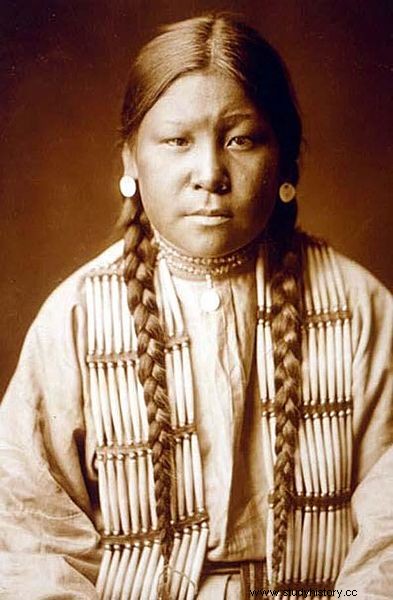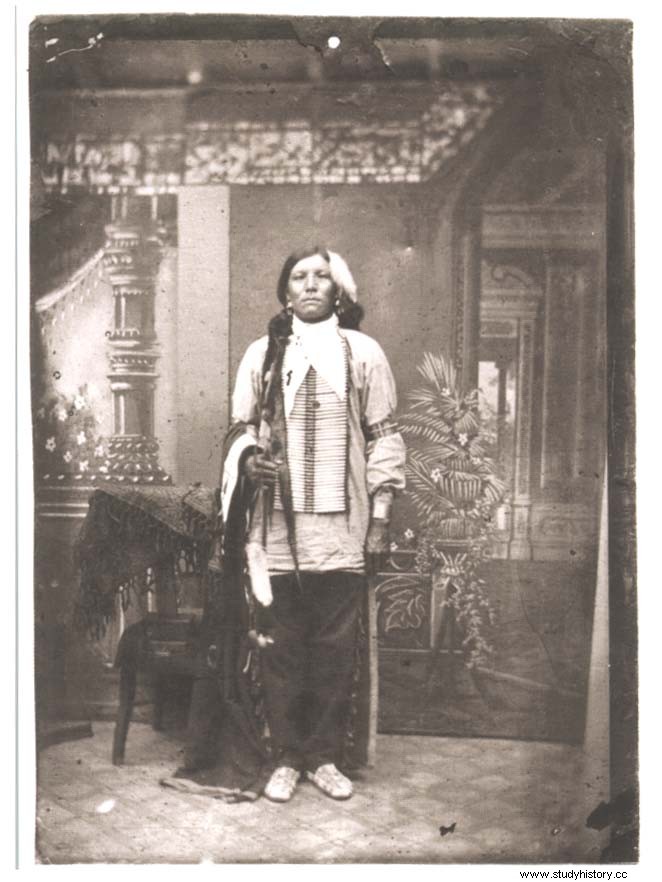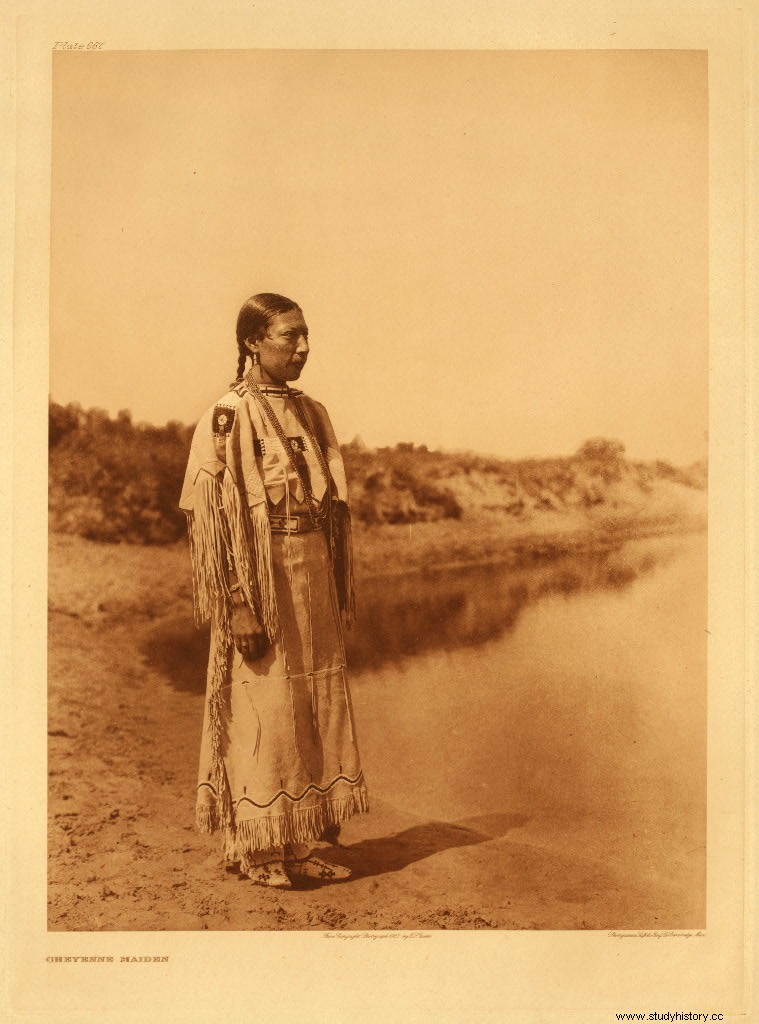Cheyenne Warrior, Buffalo Calf Road Woman or Brave Woman (1850s? – 1879) distinguished herself by saving the life of her brother, Chief Comes in Sight, during a battle against the American army. The Cheyenne credit her with the killing blow to Lt. Col. Custer at the Battle of Little Bighorn.
The Indian Wars

Little has come down to us of the life of the Buffalo Calf Road Woman warrior. A member of the Cheyenne nation, originally from the Great Plains of North America, she was born around the 1850s; she is the sister of Chief Comes in Sight, and the wife of Black Coyote.
At the time of existence of Buffalo Calf Road Woman, the Indian wars, with their exactions and their massacres, are raging. Thus, in 1864, the Sand Creek Massacre sparked a retaliatory war after Colorade militia attacked a Cheyenne and Arapahos village and massacred its people.
The Black Hills War
In 1874, Lieutenant Colonel George Armstrong Custer announced that gold had been discovered in the Black Hills, sacred Sioux mountains belonging to the Great Sioux Reservation in South Dakota. The announcement causes a chaotic gold rush, where miners invade the reservation and lead to clashes between the Sioux and their allies on the one hand, and the United States army on the other. Soon, war breaks out.
Chiefs Crazy Horse and Sitting Bull muster between 6,000 and 8,000 Sioux, Cheyennes, and Arapaho, while the U.S. Army forms three columns of soldiers under General George Crook, Lieutenant Colonel Custer, and Generals John Gibbon and Alfred Terri. In June 1876, General Crook entered the Rosebud Creek valley with 1,000 troops.
The battle where the sister saved her brother
Buffalo Calf Road Woman participates in the battle, under the command of Crazy Horse. During the fighting, Chief Comes in Sight was wounded, and left on the battlefield by the retreating Cheyenne and Lakota warriors. Refusing to leave her brother behind, Buffalo Calf Road Woman rushes across the battlefield, grabs Chief Comes in Sight, and drags him back to safety. His courage, his heroic rescue galvanize and rally the warriors who achieve victory.
In honor of her gesture, the Cheyennes would later call this battle, known as the Battle of Rosebud Creek, "the battle where sister saved brother." The victory is also of strategic importance:the casualties inflicted on the enemy are small, but Crazy Horse's army forces General Crook to retreat and prevents him from linking up with Custer's column. /P> 
The Battle of Little Bighorn
A week later, Crazy Horse and its approximately 1,500 warriors confronted Lt. Col. Custer's 647 men near the Little Bighorn River in the state of Montana. Buffalo Calf Road Woman is one of the fighters, along with her husband Black Coyote.
The battle ends in a landslide victory for the Native Americans, and Custer is killed in the fight. In June 2005, during a public and oral account of the battle of the Little Bighorn, Cheyenne storytellers will credit Buffalo Calf Road Woman with the fatal blow that killed Custer.
The end of the war

The following battles see the American army regain the upper hand. In May 1877, Crazy Horse surrendered and Sitting Bull did the same four years later. The US government seizes the Black Hills by force, dismantles the Great Sioux Reservation and resells the land to settlers.
After the surrender, Buffalo Calf Road Woman, her husband, and their two children were deported along with most of the Northern Cheyenne to a reservation in Oklahoma. In September 1878, she and her family attempted to leave the reservation and return north in what became known as the Northern Cheyenne Exodus.
During the escape, Black Coyote kills the Cheyenne leader Black Crane, resulting in the entire family being banished. After he attacks two American soldiers, and kills one of them, the family is captured in April 1879; these events are known as the Mizpah Creek incidents. Buffalo Calf Road Woman died of diphtheria in prison, May 1879. Upon hearing the news, Black Coyote, sentenced to be executed in June, committed suicide in his cell.
